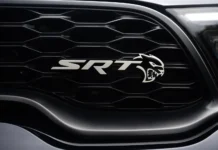
- Ford Motor Company announced a new Michigan battery plant Monday called “BlueOval Battery Park Michigan”, investing $3.5 billion into a new facility in Marshall, about 90 miles from Dearborn.
- This new plant will create about 2,500 jobs according to the automaker’s statement.
- It will use technology from China-based CATL to build LFP (lithium iron phosphate) batteries from 2026 onward.
Ford aims to build 35 gigawatt-hours of battery modules at its new Michigan plant.
Automakers are pouring billions into electric vehicle development and manufacturing, with U.S. battery manufacturing capacity taking center stage in light of recent supply chain struggles and revamped incentives. Ford Motor Company is no exception, as the company announced a new $3.5 billion investment toward a brand-new LFP (lithium iron phosphate) battery plant in Marshall, Michigan. Today’s announcement comes after a prospective plant site in the Commonwealth of Virginia was shut out by the state’s newly elected governor, Glenn Youngkin.
Instead, Ford will bring this new manufacturing capacity to within 100 miles of its world headquarters, creating 2,500 new jobs for the Marshall area in the process. It will work with Chinese company Contemporary Amperex Technology, Co. (CATL) to shore up its U.S. battery production — a move that proved a dealbreaker for Youngkin’s administration.
Today’s move is a sign that Ford and Michigan will “keep [our] foot on the accelerator”, a sentiment shared by Ford executives and Michigan governor Gretchen Whitmer.

While production from the Marshall plant, called BlueOval Battery Park Michigan, won’t begin until 2026, Ford also announced its intent to put LFP batteries into the Mustang Mach-E this year. The F-150 Lightning will follow, as the company aims to lower per-unit battery cost by adopting LFP chemistry and building them in America, rather than importing battery packs from abroad.
However, Ford CEO Jim Farley noted the company would still build nickel cobalt manganese (NCM) batteries for the longer-range versions of both the Mustang Mach-E and F-150 Lightning as well that provide their own benefits, including power density and better cold weather performance. LFP batteries, for their part, handle extreme charge level swings better than NCM and have a longer lifespan through repeated depletion and fast-charging cycles.
Ford says the Marshall facility will come online in 2026. When it ramps up production, LFP batteries will account for about 20% of Ford’s total battery manufacturing capacity.

























